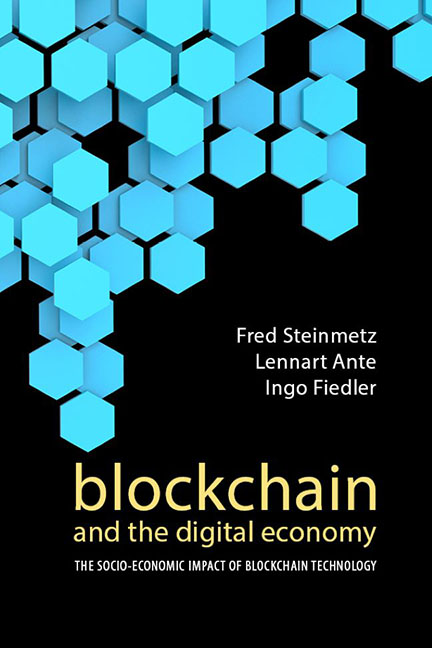2 - Blockchain’s basic components
Published online by Cambridge University Press: 20 December 2023
Summary
The best way to explain blockchain is to break it down into its basic components. We define components as the applied technologies and concepts which are either standalone technologies or concepts in computer science, which have been researched for decades in contexts other than blockchain. We identify technical and mathematical components as well as economic, political and social concepts, which are intertwined to facilitate blockchains’ functionalities. The aim of this chapter is to provide an overview of the applied technologies and concepts and an understanding of how they are combined.
First, we will explain the technical components, including P2P networks, virtual machines and smart contracts. Depending on the perspective, many blockchain systems can indeed be categorized as specific types of P2P systems, because P2P technology is the technical foundation of blockchain systems whose purpose is the exchange of verifiably unique assets. Whether P2P systems are considered forerunners of blockchain systems or a component of blockchain systems, understanding its concept, structure and differentiation from centralized architectures is crucial for understanding the innovation of blockchain technology.
While P2P networks are the technical foundation of blockchain systems, virtual machines greatly increase the functionality of blockchain systems as they allow non-censorable and autonomous programs (in the form of smart contracts) to be uploaded onto a blockchain. This is the basis of what some refer to as the Web 3.0. Blockchain is said to complement the current state of the internet by an increased connectivity through direct connections between users, new concepts of ownership, the uniqueness of digital assets and un-intermediated exchange. It adds another layer for payments, decentralized applications, automated and autonomous organizations, which need no central coordinator. By covering the topics of virtual machines and the smart contracts they enable we account for the technical evolution which the technology has experienced in the last years. Numerous applications (Chapter 4) and social impacts (Chapter 3), which we will focus on in the course of this book, rely on the increased functionality of blockchains through virtual machines. This is why we provide a detailed description of how they work and of the smart contracts they enable.
- Type
- Chapter
- Information
- Blockchain and the Digital EconomyThe Socio-Economic Impact of Blockchain Technology, pp. 15 - 80Publisher: Agenda PublishingPrint publication year: 2020



